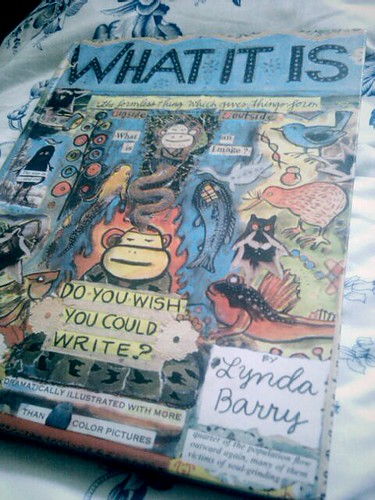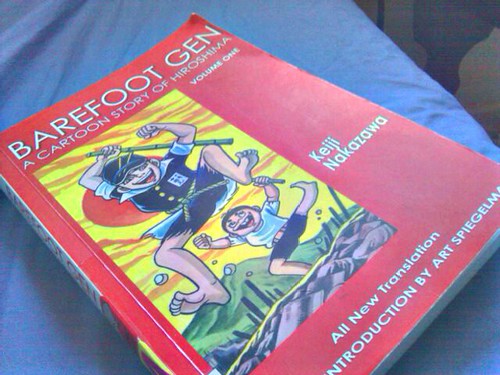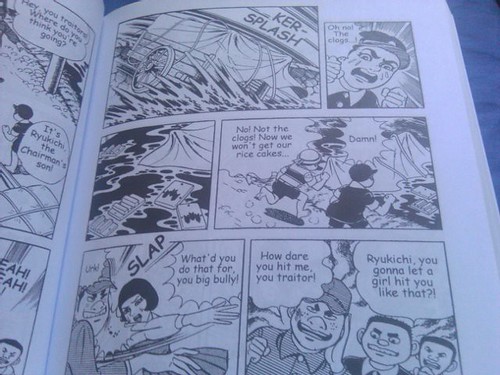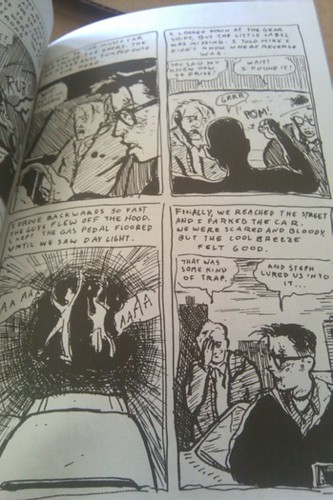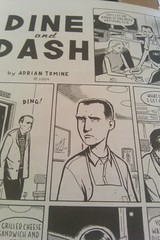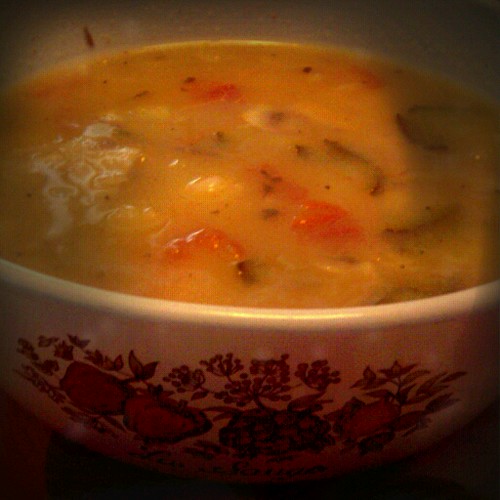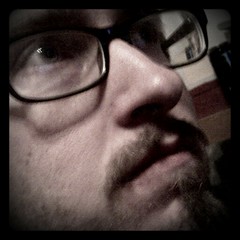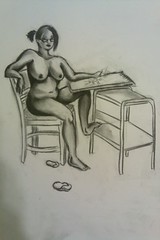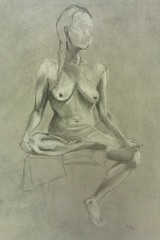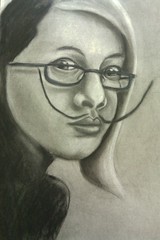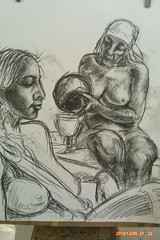What It Is by Lynda Barry
"What It Is" parades itself as a book on writing, on unlocking your latent creative genius or whatever it is that made you pick it up off the shelf. While it does contain some basic prompts like "Where do thoughts come from?" and "What is an image?"; the pages are full of clippings, drawings and random bits of writing that inspire thought.
This isn't a book to speed-read through. It may feel busy and scattered at first, but allow yourself to immerse into what each page has to offer. I found myself caught up in memories and tangents of thought for hours from just a sentence.
As a whole, "What It Is" seems to lose focus somewhere in the middle. The first third of the book comprises of writing prompts, Barry's musings on imagery and memory.
A good chunk in the middle becomes longer autobiographical stories from childhood and conversations about the book. These stories are some of Barry's best, but feels more like they would belong in a collection rather than in a book on writing.
The last third of the book is a concentrated section of writing exercises and memory prompts. The exercises are pretty basic: write about a certain topic for X minutes without ever stopping, word associations etc. There are some pretty good tips but I think most of the inspiration comes from the earlier chapters.
The writing section would greatly benefit someone starting out or out of practice, but more advanced writers probably already use these exercises. (And if you don't, you should be!) The art and comics are definitely still worth a look, writing veteran or not.
Please support small business by purchasing "What It Is" by Lynda Barry at your local bookstore or rent it at your local library. If you must, it is available for purchase at Amazon.com.
